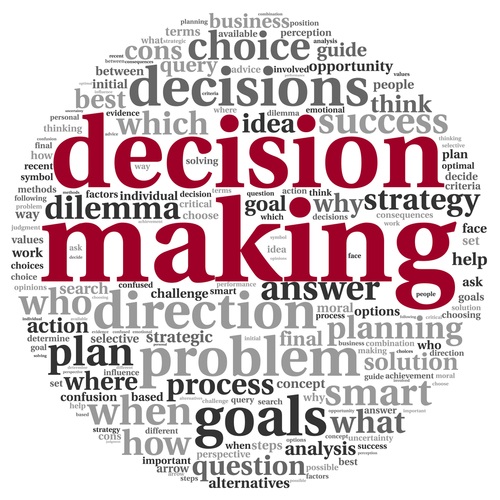Small Business
Four Steps to Better Business Decisions
Whether it is the multi-billion dollar diesel deception scandal at Volkswagen or President Obama’s decision to go after Osama bin Laden, all outcomes – good and bad – are the result of decisions made by leaders.
Sep. 12, 2016

Whether it is the multi-billion dollar diesel deception scandal at Volkswagen or President Obama’s decision to go after Osama bin Laden, all outcomes – good and bad – are the result of decisions made by leaders.
A new book by Michigan Ross Professor George Siedel delves into examples from the board room, the C-suite, and even the Oval Office to provide some structure for leaders of established businesses and entrepreneurs by focusing on the three key elements of decision-making — strategy, law, and ethics. Knowing how all three work — and knowing the balance between them — is critical to success.
His book, The Three Pillar Model for Business Decisions: Strategy, Law and Ethics (Van Rye Publishing), outlines four steps that will help apply those three pillars the right way.
“Companies and their leaders who ignore any one of these elements face serious consequences,” says Siedel, Williamson Family Professor of Business Administration and Thurnau Professor of Business Law. “Volkswagen is the latest in a long litany of examples where company leaders became so focused on the strategy pillar that they ignored the legal and ethical consequences –consequences very costly to the bottom line – of their decisions.”
The book outlines four basic steps business leaders should take to apply the three pillars the right way:
- Become a legally savvy leader. This doesn’t mean memorizing rules and regulations. It does mean having an understanding of how the law works in practice as you interact with customers, employees, investors, government officials, and other stakeholders. A practical knowledge of the law is useful in developing new products, retaining the best talent, maximizing your intellectual property, and resolving business disputes.
- Become an effective risk manager. Top leaders know which legal risks are the main threats to their business. This area also intersects with strategic decisions. For example, the book describes how to isolate product risks by creating subsidiaries, and how to use gaps in government regulation to develop new business models through a “Regulatory Gap Strategy” used by companies ranging from Southwest Airlines to Uber.
- Align strategy with the law to create value. There’s often tension between these two areas. While this tension can’t be eliminated, it can be mitigated in a way that creates a competitive advantage. For example, the contracting process has become so legalistic it often poses a barrier to creating successful business transactions. This book shows how to refocus contracts on the business goals of a transaction while preserving legal protection. This new focus creates an advantage over competing companies whose obsession with risk management interferes with business development.
- Develop an ethical organization. Leaders should develop a process at their companies for making ethical decisions. But they also have to avoid a top-down approach because employees are often unable to relate lofty commandments to their everyday work. A strength of the book’s three-pillar model is that aligning strategy and law creates practical guidelines that relate directly to the work environment.
“The three-pillar model is also useful when making personal decisions and leadership decisions beyond business,” says Siedel. “That is why my book provides examples ranging from an everyday product order from a customer to critical decisions made by a U.S. President.”
